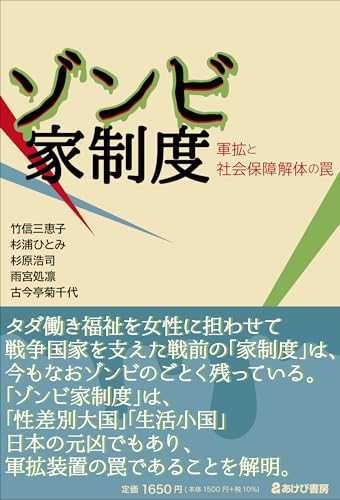It was around 2008 when Cassandra started getting involved in the Medea, based in San Francisco County Jail and marking 20 years from its inception, but it left the jail for various reasons. In the meantime, it has just started a new program, collaboration between hospital and theater, initiated by an inquiry to Rhodessa Jones, the founder and the chair of the Medea, from Dr. Edward Machtinger, who is an HIV/AIDS specialist and the director of the Women’s HIV Program at University of California, San Francisco (UCSF-WHP). He had an interest in the Medea from the perspective of promoting wellness of his patients (not only for the absence of disease or infirmity but also for physical, mental and social well-being). He wondered whether or not the approach could be applicable to HIV/AIDS-positive women. Cassandra, a patient at (UCSF-WHP), was invited by Dr. Machtinger to participate in the collaborative program with the Medea.
In the early summer of 2008, when the Medea shifted its direction — the focus of the program shifted from incarcerated women to women with HIV/AIDS, I finally received o.k. from Rhodessa to start shooting for a film. Two years had passed since my initial contact with her.
As I mentioned in the previous episode, I asked Rhodessa a permission for participatory-observation in early 2006, and by the summer, I was given an opportunity to attend a women’s jail in San Francisco as an “artist-in-residence” and my task was to help document their activities. I had expressed my will to make my own documentary film to Rhodessa from the very beginning but she had been reluctant to respond me but instead, she kept saying “Let’s see how it goes”. Over the course of next two years, I visited San Francisco every few months for a brief period and tried to build a relationship with Rhodessa and the core members of the Medea. I did all that because I was determined to make the film.
Even early on, Rhodessa mentioned that the Medea might step out of jail in any minute. Though the system of Corrections in San Francisco was considered as one of the most progressive ones in U.S., it was obvious that they could no longer escape from the tide of punitive criminal policies especially after the mid-2000s, and more regulations and less funding put the Medea, which advocates “the personal is political”, in a difficult spot.
Between 2007 and 2008, I was told that the Medea was no longer working in the jail and starting a new program with UCSF-WHP. But, during the initial year of the program, I was not allowed to contact any participants who were HIV positive including Cassandra, neither given chance to learn about the program itself. But somehow, I believed that the Medea would go back to the original activity in jail and that I could make the film. So I kept pushing my film proposal to Rhodessa.
After a couple of years of multiple visits, meetings and constant e-mail exchanges, Rhodessa finally gave me o.k. on the film project so I immediately arranged and brought my film crew from Japan before she changes her mind. But, when we arrived there, everything was vague. Rhodessa told me that it was still not possible to shoot their activities with women with HIV/AIDS because she had so many concerns. It took time for the women to speak out about themselves, and some of them suddenly stopped coming because of the fear of being known their status of HIV/AIDS to the public. Majority did not stay and the activity itself was unstable, so she was afraid that our presence would scare them off. I found out later that at the initial stage, seventy women came to the workshops, but a few weeks later, everyone was gone except one. That was Cassandra.
I understood that was not the best moment for the Medea, so I started questioning myself why Rhodessa gave me o.k. to the film project at this particular moment when everything seemed to be uncertain. After some talks with her and her colleague, I realized that they may just have given in because of my persistent and constant requests for the film project and perhaps she did not see how this situation would affect my film. Under such circumstance, all we could do was to shoot interviews with Rhodessa and a couple of other core members as well as supplemental footage of their daily reality.
“Why don’t we call off this film project?” This frank and honest remark by my film crew made me upset. Although I talked back decisively, “I will never give up,” I felt discouraged and worried. I had no clew on how to continue this project. Not even a bit. Yet, my passion for the film project remained firm.
In another year or so, I made multiple visits–only a few days for each. I just had coffee and chatted with a couple of original members of the Medea at best, for I was not permitted even just to make contact or to observe their activities. Still, I was trying to figure out how to make the film happen.
I knew how people with HIV/AIDS would react toward a filmmaker like me because I had had done a long-term TV project on the positive people years ago. At the same time, it was true that I was worried that our film might never be made.
Meeting Cassandra for the first time was at the crucial time. It was the spring of 2009 and one year had already passed since the program started. In those days, workshops were held once or twice a week at a large warehouse in a bay area. I was finally allowed to attend the workshop. Six or seven HIV positive women along with familiar faces were there. Cassandra was one of them and I thought she was shy and polite.
In a circle of discussion called “Check-in” held at the beginning of the workshop, participants spoke honestly about everything from health concerns to personal issues with their boyfriends and family. I was moved by their courage and intensity and I could feel that they had already established trusting relationship which had taken a long time. And it took me another year or so to get to know of Cassandra and other positive women.
To be honest, even at that point, I had no idea whether the Medea’s program with the positive women itself would survive or not, but my anticipation of making the film has been enhanced by seeing the actual women, whom I had heard about for quite some time; they were actually dancing and talking in front of me. But at the same time, there were many concerns such as gaining trust from them and keeping the relationship in a distance between Japan and U.S.

 慰安婦
慰安婦 貧困・福祉
貧困・福祉 DV・性暴力・ハラスメント
DV・性暴力・ハラスメント 非婚・結婚・離婚
非婚・結婚・離婚 セクシュアリティ
セクシュアリティ くらし・生活
くらし・生活 身体・健康
身体・健康 リプロ・ヘルス
リプロ・ヘルス 脱原発
脱原発 女性政策
女性政策 憲法・平和
憲法・平和 高齢社会
高齢社会 子育て・教育
子育て・教育 性表現
性表現 LGBT
LGBT 最終講義
最終講義 博士論文
博士論文 研究助成・公募
研究助成・公募 アート情報
アート情報 女性運動・グループ
女性運動・グループ フェミニストカウンセリング
フェミニストカウンセリング 弁護士
弁護士 女性センター
女性センター セレクトニュース
セレクトニュース マスコミが騒がないニュース
マスコミが騒がないニュース 女の本屋
女の本屋 ブックトーク
ブックトーク シネマラウンジ
シネマラウンジ ミニコミ図書館
ミニコミ図書館 エッセイ
エッセイ WAN基金
WAN基金 お助け情報
お助け情報 WANマーケット
WANマーケット 女と政治をつなぐ
女と政治をつなぐ Worldwide WAN
Worldwide WAN わいわいWAN
わいわいWAN 女性学講座
女性学講座 上野研究室
上野研究室 原発ゼロの道
原発ゼロの道 動画
動画



![[広告]広告募集中](https://wan.or.jp/assets/front/img/side_ads-call.png)












